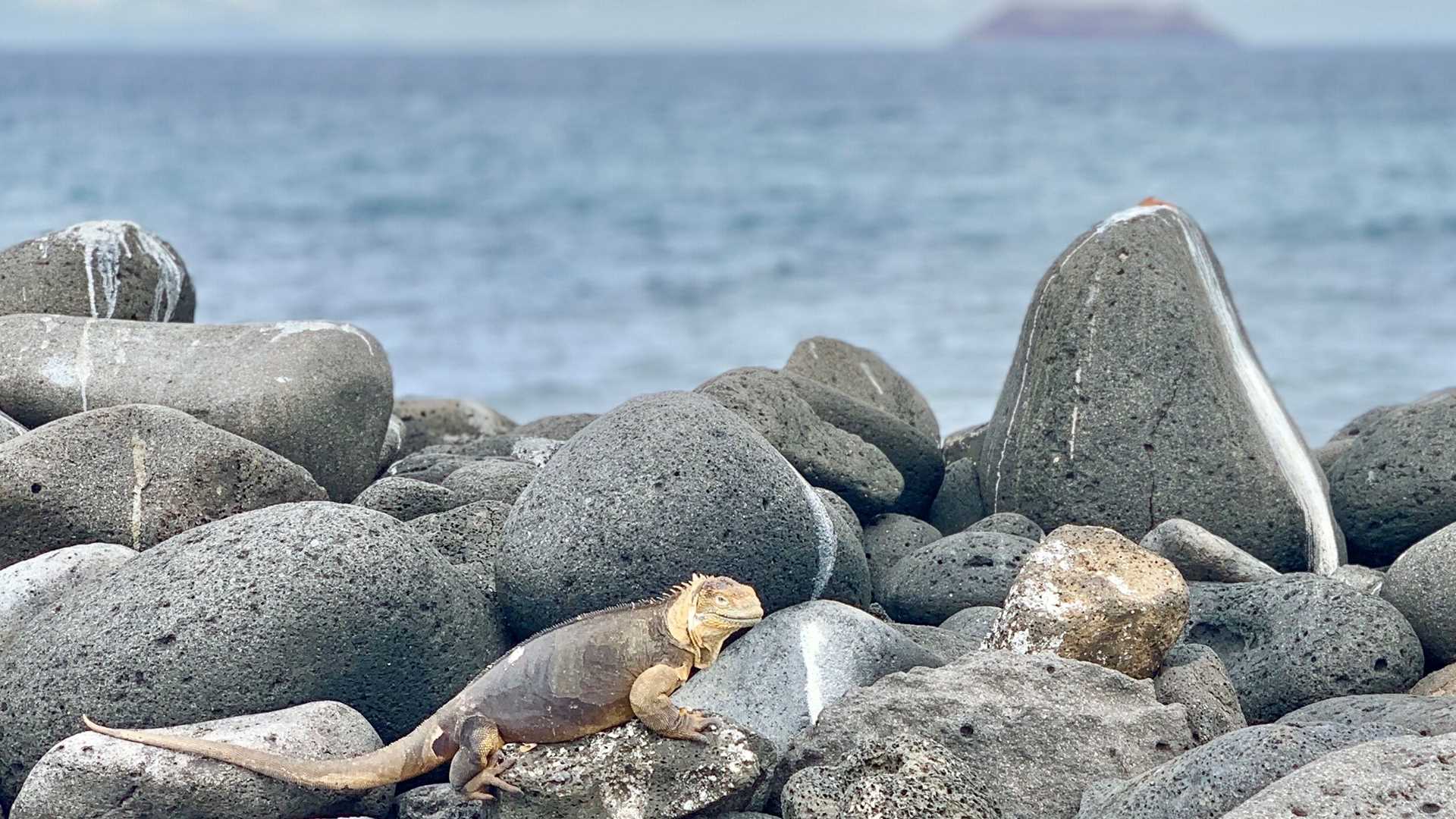Our exploration continues with an early morning visit to North Seymour Island. This low-lying volcanic island in a succession of uplifted islands is impressive with the high amount of wildlife present. Magnificent and great frigatebirds nest here and are active throughout the year. Due to its geographic position in the middle of the archipelago, food sources are present year-round and allow for continuous breeding.
As the trail takes us inland, we are surrounded by a dry palo santo forest of incense trees. The occasional Opuntia prickly pear cactus emphasizes the arid landscape. Galapagos land iguanas move about slowly, trying to warm up and become active in the early morning. As we head farther inland, male blue-footed boobies make an occasional “whistle” to try to attract a mate. Back at the coast, Galapagos sea lions laze among the volcanic boulders while swallow-tailed gulls tend their nesting areas among the marine mammals.
After a short navigation, National Geographic Endeavour II arrives to Rabida Island. This island stands out for its dark red coloration. This is due to the high iron oxide content in the volcanic basaltic base including the eroded beach section. Here we explore the undersea area, with sea lions swimming among snorkelers and various species of reef fish in the shallows. The late afternoon welcomes us with a short exploration to a brackish pond and the American flamingos that have recently set up a breeding colony here. It’s a wonderful day to show the unique diversity of the Galapagos.







